Authors: Barbara Ingham and Steve Ingham
After flooding occurs, gardeners often raise questions about the safety of consuming produce from gardens that were under water for a day or two. How concerned gardeners have to be about using garden produce after a flood depends, to a large degree, on how “clean” the flood water was or whether it was likely to have been contaminated with sewage, river or creek water, farm run-off, or industrial pollutants. The most conservative answer — one that eliminates any and all risks — is that gardeners should discard all produce that was touched by flood water. However, if flooding occurs early, there will typically be weeks left in the growing season, and gardeners will likely wish to salvage some crops. The following are tips for considering what can be salvaged and what must be discarded from a flooded garden.
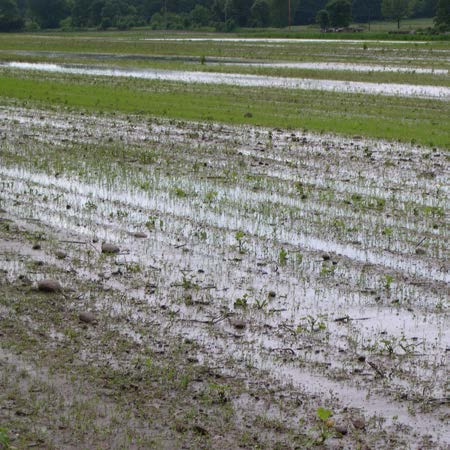
Produce can be cooked to ensure safety.
This is the best choice if anything that was touched by flood water will be served to those most at risk for serious consequences from microbial food-borne illnesses, including young children, the elderly, pregnant women and
those with compromised immune systems. Note that cooking will not eliminate the risk posed by industrial pollutants.
Discard all produce that is normally consumed uncooked (raw).
This includes all leafy vegetables such as lettuce or spinach, regardless of how mature the plants are. It is not possible to clean these crops as they have many ridges and crevices that could contain contaminated silt or bacteria. All soft fruits that are ready to harvest, such as strawberries or raspberries, should also be discarded unless they can be cooked; they too are impossible to thoroughly clean and cannot be safely consumed raw.
Melons and other fruits that will be eaten raw should not be consumed. Recent food-borne illness outbreaks linked to melons suggest that these low-acid fruits may not be safe even if surface-sanitized.
Other produce may be salvaged depending on the crop and how far along it is in the growing season.
In general, any produce where the edible part was directly touched by flood water presents a potential risk to health if consumed. This includes produce that was submerged or splashed by flood water. The ability to salvage crops that will be eaten raw with minimal risk depends on the source of the flood water, time to harvest, and whether potential contamination will have been internalized into the plant tissue.
One starting point for evaluating the safety of produce from flooded gardens is the National Organic Program (NOP) guidance to farmers wishing to harvest produce from soil fertilized with non-composted manure. The NOP requires a 90-day period before harvesting edible material from plants grown in soil fertilized with non-composted manure, but where the manure has not come in contact with the edible material. NOP standards require a 120-day period before harvest of edible plant material that had direct contact with non-composted manure. Research suggests that contamination from non-composted manure should present a more significant health risk than contamination from flood waters.
Early season crops harvested within a few weeks after a flood, and that remain above flood waters, should be safe to eat if cooked or peeled.
Examine any produce carefully before harvest. If it is soft, cracked, bruised, or has open fissures where contamination might have entered, throw it out. Intact produce can be eaten, but should be rinsed with clear tap water (DO NOT use soap) followed by a brief soak (2 minutes) in a weak chlorine solution of two tablespoons bleach in a gallon of water. Finally, rinse the produce in cool, clean tap water. Peel or cook these items thoroughly before eating. Take care to prevent cross contamination in the kitchen. Change the bleach solution if the water is no longer clean. Vegetables, such as tomatoes, produced from flowers that form after flooding has occurred can be safely used.
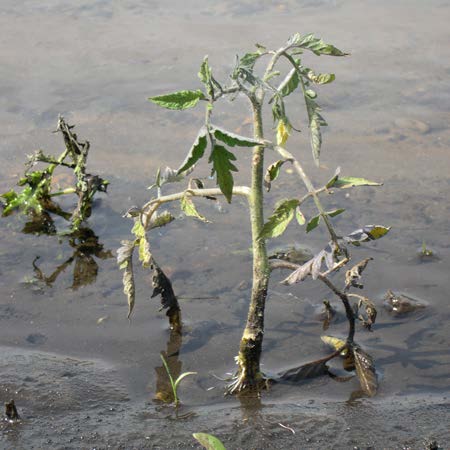
Plants where fruits have set (tomatoes) or where flowers are evident (broccoli/cauliflower) at the time of flooding present an undefined risk.
Before consuming these crops raw, consider the source of the flood water, the time since contamination, and the health of the tissue. Always discard any tissue that is bruised, cracked or otherwise blemished. Washing fresh produce with clear water, followed by a brief soak in a dilute bleach solution (see above) and then rinsing before eating or peeling will help to reduce any remaining risk.
Late-season vegetables that result from flowers produced on growth that develops after flood waters subside should be safe. This group of vegetables includes tomatoes, peppers, eggplants, squash, cucumbers, and other similar vegetables. To increase safety, cook these vegetables thoroughly, or at least wash them well and peel
them, if possible, before eating.
Root vegetables and tubers pose a lower risk, if proper food safety measures are followed.
Underground vegetables such as beets, carrots and potatoes that are still early in their growth (at least four to eight weeks from harvest) should be safe if allowed to grow to maturity. Root crops (i.e. new potatoes) that will be consumed within a month after flooding should be washed, rinsed and sanitized as directed above before cooking
thoroughly. Note that beets may be peeled after cooking, if desired.
Other considerations for produce harvested from flooded gardens.
Flood-damaged garden produce that is otherwise unfit for eating should not be canned or otherwise preserved. Garden produce that would be safe to consume after washing, sanitizing and cooking (see above) may be safely canned.
Because the low temperature of home dehydrators does not destroy high numbers of bacteria, do not attempt to dehydrate produce from flooded gardens.
Never sell produce from a flood-damaged garden at a farm market or farm stand until you are sure that all contamination has been removed from the garden, usually a period of at least one month after the last incidence of flooding. Check with the Division of Food Safety of the Department of Agriculture, Trade, and Consumer Protection at (608) 224-4665 if you have questions about market sales of garden-flooded produce.
University of Wisconsin Garden Facts XHT1187
Revised: July 15, 2016
Download Article






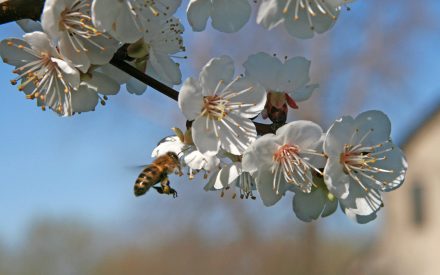 What’s All the Buzz? Woody Plants for Bees, Butterflies, and Other Bee-t-full Pollinators
What’s All the Buzz? Woody Plants for Bees, Butterflies, and Other Bee-t-full Pollinators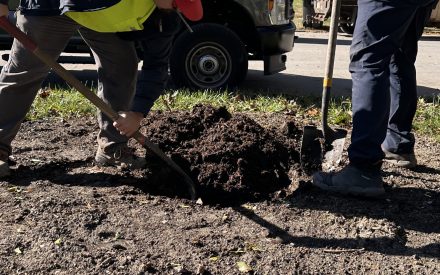 Promoting Urban Forestry: Planting Bareroot Trees in Home Landscapes
Promoting Urban Forestry: Planting Bareroot Trees in Home Landscapes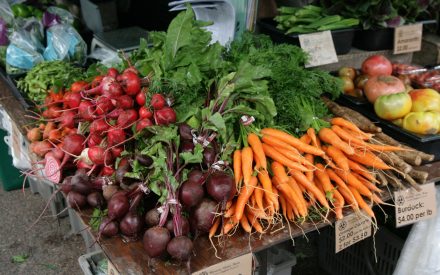 The Vegetable Garden
The Vegetable Garden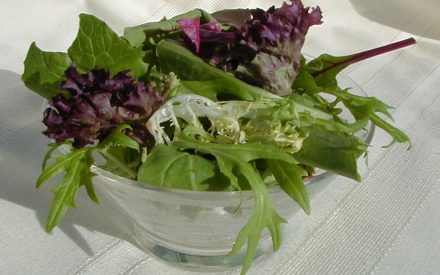 Grow Your Own Salad Greens
Grow Your Own Salad Greens


